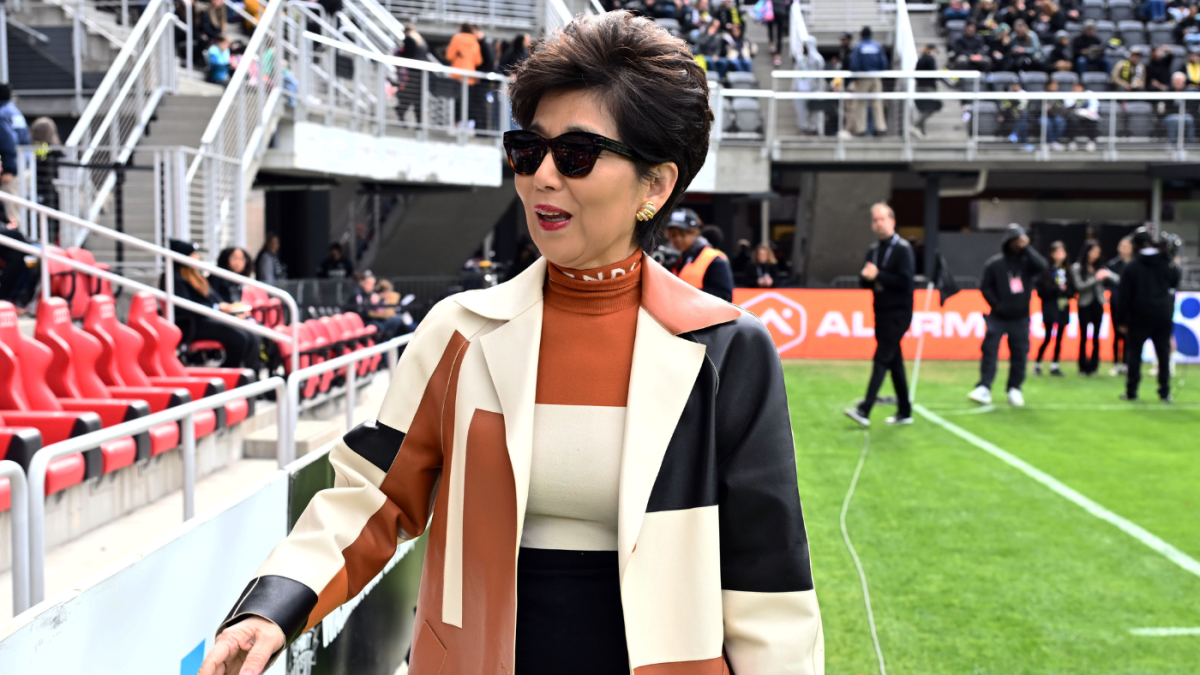Fashion
How Custom Fashion Took Over Social Media

Customizing clothes to individual preferences has always been at the heart of the fashion industry. But today, made-to-order clothing and accessories are more extravagant, yet ubiquitous than ever before. With changes in consumption post-pandemic, and later, increased microtrend fatigue from TikTok, Gen Z is spearheading a newfound growth in custom fashion. More and more young people are opting for personalized pieces over mass-produced items, and they’re willing to drop significant amounts of time and money for them. From bedazzled sneakers, hand-knit headphone covers, and overly-charmed bags to patchwork and tiedye shirts—custom fashion is all over social media.
For a market plagued with core trends galore, the hunger for individualism leads to avenues that better express consumers’ evolved personal style. There’s an overall sartorial desire for lore, or having a personal connection to the pieces in their closets that marketing buzzwords can’t convey.
“People, including me, feel repressed in many ways,” says designer Caterina Mongillo, or @metagirl.studio on Instagram. With individuality as a fundamental principle of fashion, she explains that, naturally, customization will always be “an outlet to tell others, ‘Hey, I’m actually a unique individual.’”
At the end of 2019, Mongillo was finding her footing as a footwear designer, using DIY and upcycled pieces to build a reputation as one of the internet’s top new “shoe surgeons.” But there were few canvases to choose from at the time. “It was very limited back then because Nike Air Forces dominated the market,” the 29-year-old tells Complex. “If you weren’t customizing Nike, you wouldn’t get any visibility.”
Now, 45,000 Instagram followers later, Mongillo says the custom landscape has diversified. Long-gone are the days when Nike reigned supreme as the go-to choice. Mongillo and other like-minded creatives tap a range of (re)emerging styles; unlikely silhouettes hailing from Vans, Adidas, New Balance, and Asics have reached the forefront. This month, Vans even tapped Mongillo to design a 3D-printed detachable shoe cage for the Rowley XLT skate shoe.
The DIY playground continues to expand beyond the work of independent designers—more brands also want their slice of the personalization cake. The Bode x Nike collaboration, featuring toy-like shoelace charms, is currently on StockX for double the retail price. Crocs has had a 52% increase in search on StockX thanks to its limited-edition capsules and wide range of collectible Jibbitz pendants, according to Drew Haines, Merchandising Director at StockX. On Coach’s Spring/Summer 2025 September New York Fashion Week runway, the brand debuted a line of leather accessories with handwritten graffiti-style scribbles and all-over patches resembling children’s stickers. Coach has plans to release actual sticker packs in the near future so buyers can customize their accessories themselves.
The DIY-ification of fashion injects a dopamine rush, offering a dose of creative longevity for the overwhelmed and overstimulated. Consumers are challenging their purchasing decisions—the “shop smarter” ethos has rebranded on TikTok as #underconsumptioncore. “[Working as an independent artist] has made me more intentional with the things I consume online, how I create, and what I buy,” says Tony Tafuro, a New York-born, Miami-based artist known for his vibrant, hand-painted tees and hoodies worn by the likes of ASAP Rocky, Kim Kardashian, and Hunter Schafer. The destigmatization of secondhand clothing has contributed to the custom market boom.
“It’s out with the new and in with the old,” says Alexandra Colac, Sustainability Lead at Klarna. “People are starting to appreciate the long-term value of what they already have and own. It’s all about keeping the circulation of a product, whether you decide to repair or upcycle it.”
For both Mongillo and Tafuro, upcycled custom pieces start at $1,000 and can reach upwards of $6,000. While they boast celebrity clients, their work is also high in demand from fans on social media who reach out via DMs for commissioning inquiries. Spending thousands on a single, unbranded custom piece may seem counterintuitive to “underconsumption,” but for some patrons, it’s more of an investment, as well as a buy-in to something more special and meaningful. “It allows people to connect with their clothes and encourages longevity. People want to cherish their pieces for longer,” Colac adds.
Mattias Gollin, the 29-year-old Italian co-founder of ral7000studio, is another creator behind many of the futuristic accessories circulating the internet. Think pearl-studded Timberlands, crystallized Vans, and chrome-plated goggles. No matter who his customers are—whether a star like J Balvin or a non-celebrity—they all want the same thing: to stand out with items that still preserve a human element.
“It’s all about uniqueness and conveying a good story, and big brands are missing that,” Gollin tells Complex. “These days, people feel more connected to the emerging brands or people behind those custom pieces. It’s why we’re seeing more independent designers pop into this space and flourish.”
But is customer desire for uniqueness actually converting into business? Vita Haas and Lucy Weisner, co-founders of the New York-based boutique Café Forgot, say that their inventory of rare finds has played an integral part since their inception in 2017. As buyers, sourcing one-of-a-kind styles, often made by small labels and in limited quantities, feels very intuitive. “It enables us to experiment more [with our curation],” says Weisner. “There’s a hunger for something special because of how pervasive social media is. Things become ubiquitous fast, so there’s a want to have something different.”
That urge compelled Brandon Alston, a 23-year-old actor and secondhand designer behind Fresh Prince Fits, to learn how to sew and elevate his thrifting finds. “I had an endless amount of clothes at my disposal, especially as I was a vintage reseller at the time,” Alston tells Complex. “From there, I thought, ‘I’m not going to wear anything I didn’t make because there’s nothing else like it. There’s so much hype about ‘being unique and being yourself,’ but with the way fast fashion works, there’s no way to do that.”
Alston notes the communal aspect in growing your closet by supporting an emerging pool of talent. There’s an unspoken consensus among him and his peers that buying a custom piece is like investing in art. “It’s no longer just a garment you wear,” he adds. “It’s something you’ll treasure even if you’re not wearing it. It becomes something bigger than its functionality.”
Ultimately, custom fashion dares to ask: Who are you beyond the labels? “We [have the] desire to fit in the ‘In Crowd,’ or we think obtaining specific products gets us accepted in this club of coolness,” says Haines of Café Forgot. “What people will realize eventually is that personal style is about the person.”









